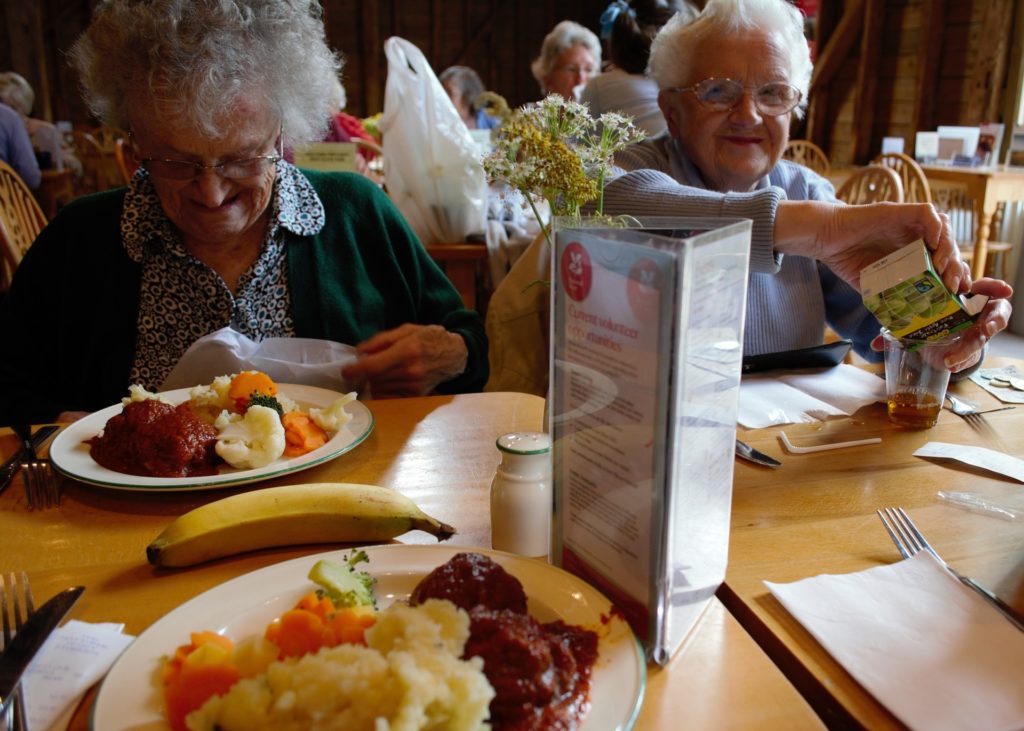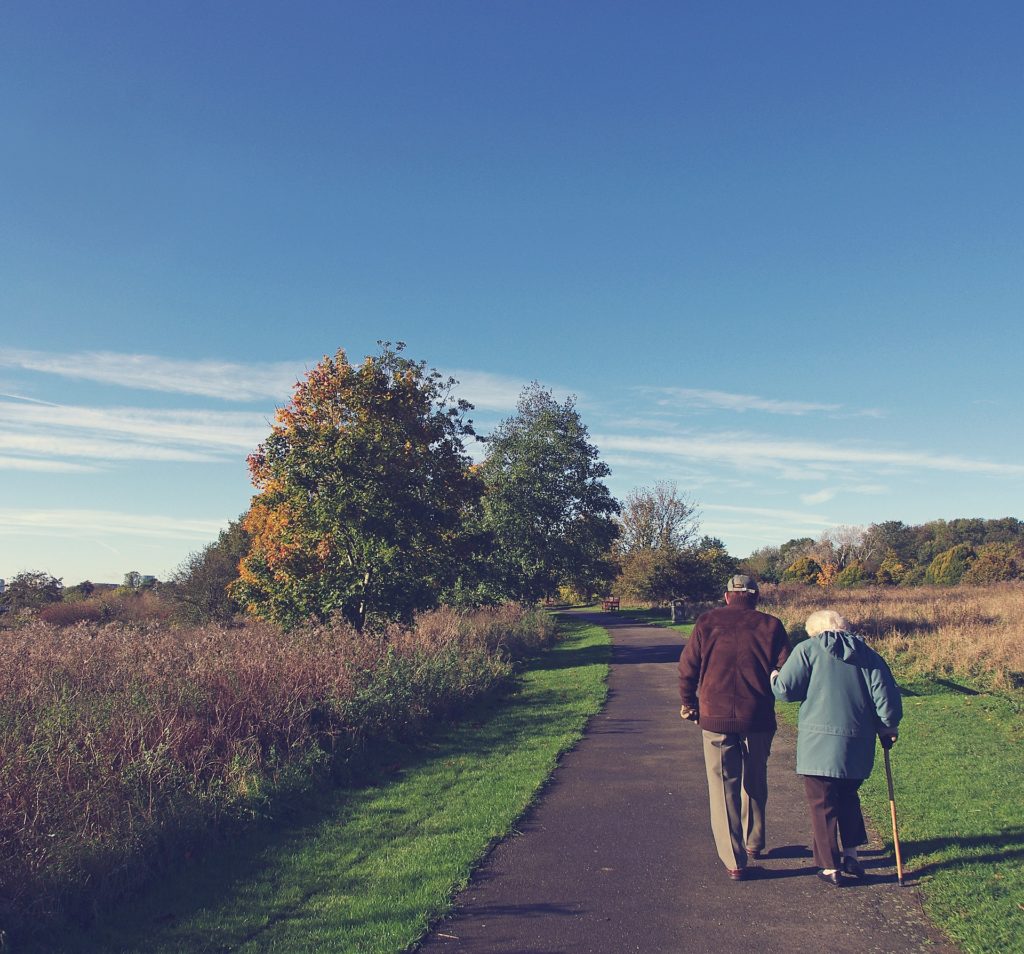Healthy Choices in the Golden Years: Staying Physically Fit After 60

Photo Credit: Pixabay
As our bodies age, maintaining our physical health comes with more and greater obstacles. Keeping up positive habits is especially important in the golden years, but many seniors struggle to find the right balance of exercise and healthy eating. Fortunately, making positive changes to your routine probably isn’t as difficult as you might think!
This guide will break down everything you need to know about healthy living after age 60. We’ll discuss the dietary changes you may need to consider as well as how to implement them, and then explore exercise at varying abilities. Be sure to check in with your doctor before making any major changes to your diet or exercise regimen, especially if you have a medical condition to consider.
You can start a healthier life today… all you have to do is take the first step!
Diet
Before going over the actual changes you may need to make in your diet, it’s important to understand the ways your body is changing. It’s common for seniors to experience a general decrease in appetite due to the reduced physical activity and metabolic rate that accompany aging. But it’s more than just not feeling as hungry — as your body wears, it sees other physical changes that might not seem to impact your diet, but can actually place a major role.
First, there are a number of sensory changes that occur in older adults. Many see a diminished sense of smell, which can not only fail to trigger a person’s hunger but also affect the way food tastes. Similarly, there’s a decrease in taste buds that can lead foods — even those you once loved — to taste more bitter or sour. Perhaps the most common sensory change is a loss of hearing. Though hearing loss doesn’t immediately seem like it could affect someone’s eating habits, it can make socializing — which is often done at mealtime — less enjoyable. Seniors might grow weary or feel self-conscious about constantly needing to ask their mealtime company to repeat themselves, and in turn become less likely to seek out those experiences.
Next, there are physiological changes to consider. A person’s gastrointestinal system can be especially volatile after years of wear and tear: stomach pain, gas, constipation, heartburn, and ulcers are just a few of the possible discomforts of an aging digestive system. For some, this might make it challenging to eat healthy food, and for others it might make it difficult to eat at all. Further, most seniors see their dental health fade even if their teeth have never been a problem before. Poor-fitting dentures, cracked or missing teeth, and gum sensitivity can all make eating a struggle; some seniors find it easier to simply cut back on their food intake.

Photo Credit: Pixabay
Unfortunately, all of these problems combined can lead to malnutrition. Whether a person isn’t eating enough period or simply isn’t consuming enough nutrients, they can end up with weakened muscles as well as an unsteady immune system. Even worse, malnutrition can further depress a person’s loss of appetite, ultimately amplifying the issue and subsequent problems.
Exactly which kinds of deficiencies may occur will vary depending on each person and situation, but in general seniors often face nutrient deficiencies around vitamins A, B, C, D, and E, folic acid, calcium, and niacin. For particularly serious issues, or if dietary changes alone aren’t getting your body back on track, your doctor might recommend you start taking a daily multivitamin. Keep in mind, however, that a vitamin alone won’t be able to sustain you: it’s meant to supplement a healthy diet.
Eating well can also be an important part of disease prevention. In fact, studies have shown that in conjunction with adequate exercise, maintaining a healthy diet can lower your blood pressure and cholesterol levels, while also reducing your risk of Type II diabetes, heart disease, bone loss, stroke, plus a few forms of cancer. It can even make managing certain pre-existing conditions (like diabetes) much easier on the body.
A great place to start when it comes to modifying your diet is the set of dietary guidelines for adults over 50 established by the Office of Disease Prevention and Health Promotion. It can give you a solid basis for which direction to go for most essential vitamins and minerals, but do keep in mind you might need to make adjustments based on your specific needs.
If you aren’t sure where you stand or haven’t had a physical recently, make an appointment with your doctor. Be honest about your diet and exercise level so that they can give you an accurate assessment and advice. Don’t hesitate to ask any questions you have; your physician is always happy to ensure you understand their advice, and they realize that sometimes that means explaining it again in more general terms. Let them know you’re interested in making changes and see what specific tips they can give you about your circumstances. They may also be able to direct you to local senior wellness programs or nearby fresh markets with senior discounts.
Your diet is going to be all about balance — not only do you need to eat healthy choices, you need to eat the right amount. Your doctor will likely give you a total calorie consumption goal to meet each day. You’ll need to divide those calories up among fruits, vegetables, grains, proteins, and meats. This chart from the U.S. Department of Agriculture can help you get a more tangible idea of how to meet your goals based on your total intake. For example, if you’re advised to consume 1,600 calories each day, you’ll want to eat about two cups of vegetables. Think of it even more simply than that: a salad with lunch and Brussels sprouts with dinner.
You’ll also want to do some strategizing with your diet. If you know which foods are especially nutritious, you can make the most out of every meal. It doesn’t have to mean eating only foods you hate, but you may discover it’s worth eating out of your comfort zone when it means your overall health and everyday living can improve. If you hate milk but your doctor recommends you drink at least a glass a day because of your osteoporosis, focus on how much time you probably spend worrying about fracturing a bone and how nice it will be to put your mind a bit more at ease. Keeping an eye on the bigger picture can hold you steady anytime you’re thinking of skipping lunch or grabbing that second slice of dessert.
When it comes to vegetables, aim for fresh as often as possible to get the most nutrients you can. Frozen is second best; just make sure to opt for those without any added sauce. Canned vegetables tend be one of the most convenient options, and while they are still healthy, they sometimes have diminished nutrient value by the time they reach your table. At the very least, it doesn’t hurt to keep some extra canned veggies around — if your groceries are low, it’s better to eat lower-nutrient vegetables than none at all — but keep an eye out for low and no sodium choices.
As with vegetables, it’s always best to go with fresh fruit. Dried options are a valuable alternative to fresh, but you’ll need to pay close attention to make sure no sugar was added. Canned fruit is another more convenient option, especially in the colder months when much is out of season; look for those that are in natural fruit juice instead of syrup.

Photo Credit: Pixabay
We tend to need more protein as we age, but for seniors with heart disease, diabetes, or certain other conditions, it isn’t necessarily as easy as ordering a burger. Fortunately, there are plenty of non-animal product options. Nuts, beans, lentils, and chickpeas are all excellent sources of protein that can be easily added to just about any meal. Red meat is one of the best options for those in need of protein as well as an iron boost, but your doctor might suggest sticking to seafood, poultry, and pork as healthier alternatives.
Remember: your body might have a lot of factors working against your appetite, so you’ll have to be dutiful about sticking to your positive habits. Commit to a meal routine: eat breakfast, lunch, and dinner around the same time every day, and don’t let yourself make excuses, even if you aren’t particularly hungry. You don’t have to completely re-vamp your diet overnight, but instead make small adjustments as often as possible. Perhaps you can’t immediately get into the habit of eating a well-rounded breakfast each morning; instead, commit to at least eating an orange or a couple of hard-boiled eggs. Each step in the right direction is forward progress, so look for every opportunity.
Exercise
As with healthy eating, staying active is a vital part of wellness. Some seniors simply get out of the habit of exercising regularly, maybe even as the result of a diagnosis or injury. There are also those who are reluctant to exercise for fear that their bodies won’t be able to handle it. But leading an active lifestyle is about more than just staying fit: it also helps you maintain your freedom. Getting regular exercise can increase your flexibility, range of motion, and muscle strength, all while helping you solve mobility and balance issues; in other words, the more you get moving, the less likely you’ll need to depend on others for help!
You might think you need special equipment to stay fit, but there are plenty of ways you can get yourself in shape without it. If it’s been a while since you’ve really gotten exercise, start small and work your way up. Go for a 10-minute walk a couple of times a week, and don’t forget to stretch before and after. Increase your walk time gradually, and once you’re able to go for at least 30 minutes without needing a break, you should be ready to seek new challenges.
Aerobic exercise isn’t just good for your heart, it’s a great opportunity to try new things. You have all kinds of options, many of which can be done from home, including:
- Cycling
- Swimming
- Walking/jogging
- Hiking
- Steps
- Rowing
Looking to branch out and meet new people? There are likely senior groups at your local YMCA, senior center, or hospital. You might consider options like:
- Salsa, Zumba, or other dance classes
- Water aerobics
- Pilates
- Martial arts
- Yoga
In addition to aerobic exercise, you may want to work on your balance, strength training, and flexibility. Consider recruiting a workout buddy; you can hold each other accountable, try new classes and exercises together, and cheer each other on every step of the way. It doesn’t have to be someone your age — joining your daughter for her morning yoga might be a nice way to bond, for instance — but it can be helpful to stick with someone around your ability level so no one pushes too hard. Never forget that low-intensity (beginner’s level) exercise for one person may be high-intensity (more advanced) for others; your partnership should be encouraging, but not pressuring.

Photo Credit: Pixabay
If you aren’t into formal exercise, get creative! Speed up your cleaning regimen, go to the mall for a stroll, or turn on some music and dance. No free weights at home? Grab a couple of those smaller canned vegetables and do some arm lifts. Do some leg exercises while you’re reading the paper in the morning. There are dozens of little ways you can get your body moving throughout the day, but remember not to push yourself past your own abilities.
Healthy aging doesn’t come without its dues, but in the end it’s always well worth the effort. Focus on the practically-endless benefits — better mobility, less dependency on others, improved health, reduced chances of certain diseases, more valuable time with loved ones — and soon, the extra work you put in won’t even feel like much of a sacrifice.
Leave a Reply